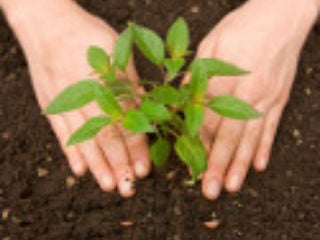During the imminent terrible wartimes, the availability of allopathy or ayurvedic doctors, medicines in the chemist shops etc. will be extremely scarce. In such situations, Ayurveda will be our only life support. In this article from the series of articles on the subject, let us understand the information on ‘How to preserve the medicinal plants obtained from nature’. Shortly a holy text will be published on this topic. In that holy text detailed practical information on, ‘Collecting and preserving medicinal herbs’ has been given.
1. Since some of the medicinal herbs get dried soon after the monsoon period, collect and preserve them now itself !

Vaidya Meghraj Paradkar
Every year by the grace of Deity Varun, several medicinal plants grow naturally during the rainy season. Some of these plants wither in about 1-2 months after the end of the rainy season. Thereafter, these plants are not available until the next rainy season. Therefore, such plants should be collected and preserved right now.
2. Benefits of collecting and preserving the medicinal plants
Some of the medicinal plants mentioned in this article are also available in the ayurvedic medicine shops, however, collecting such plants from nature is always better than buying them. There is no guarantee that the medicinal plants that are available for buying would be fresh. If the medicinal plants are old, their effectiveness gets reduced. Usually, high level of adulteration is found in the medicinal plants available in the shops. They also contain dust, soil and other waste materials. On the other hand, when we collect the medicinal plants ourselves from the natural environment, they are fresh and free of any adulteration. We can preserve such plants after washing them thoroughly. This way they remain clean as well. Once the plants are collected and dried properly, they can be stored in an airtight container and used for about one to one and a half year.
3. Take the help of expert or known ayurvedic doctors from the village to identify the plants
Most of the elderly people from the villages have knowledge of quite a few medicinal plants. One can show them the pictures of the plants given in this article and seek their guidance regarding where these plants can be found and then get acquainted with these plants. If possible, one can also take help from known ayurvedic doctors. Ayurvedic doctors not only have the knowledge of the medicinal plants, but they also know how to use them. A skilled ayurvedic doctor has expertise of using just one medicinal plant for effective treatment of various diseases. Apart from the medicinal plants mentioned in this article, if an expert suggests additional plants, then collect and preserve those plants as well appropriately.
4. Practical guidelines for collecting medicinal plants
A. One should offer prayer to the God before leaving home for collecting medicinal plants and pay gratitude to Him after returning home.
B. One should not collect plants from dirty places, in the vicinity of drainage water, from marshy lands and crematorium. Places from where medicinal plants are to be collected, should be clean and hygienic.
C. Such places should not be surrounded by factories which create pollution, especially those which expel hazardous chemicals.
D. One should not collect plants which are affected by fungus, infected by germs or diseased.
E. One should not collect medicinal herbs from poisonous trees, e.g. one should not collect Giloy from Kajra plant.
F. One should not collect medicinal plants from the places where one experiences distressing vibrations.
G. Unless the medicinal plant is correctly identified, one should not collect it. Usage of wrong herbs can cause ill-effects. Therefore, it is important to get the medicinal plants correctly identified with the help of the experts.
H. One should not pluck the herbs after sunset.
5. Process to be carried out after collecting the medicinal plants
A. Collected herbs should be neatly tied together with twine and immediately put in bags with their name written on them.
B. After bringing the collected herbs home, they should be neatly washed. While washing, one should take care that their seeds do not get washed away or damaged. To ensure this, one must separate the seeds and keep them carefully before washing. If the plants have been uprooted while collecting, then their roots should be cut with the scissors. If the roots are soiled, then to ensure that the soil does not get in contact with other plants while washing, the roots must be washed separately.
C. To ensure that the herbs get neatly washed, soak them in water for 30 minutes to 1 hour. By doing this, dirt and other waste material deposited on them gets separated quickly.
D. Make small pieces of the plants while they are wet.
E. After washing the plants, dry them properly under the sun. If the plants are fragrant, then rather than drying them in the sun, dry them under a shelter. After drying, if the further processing is not being done immediately, then place the plants in a plastic bag, put a name tag and seal it. The sealed plastic bags must be kept in an airtight container.
F. If the stored dried plants or their powder extracts are not in use, then open the container after regular specific intervals to check if they are in good condition.
G. Properly dried small pieces of the medicinal plants should be grinded to a fine powder in a mixer. Sift this powder using a sieve. The powder left in the sieve can be either grinded again in the mixer or stored separately in a bag. The fine powder of the medicinal plant is called as ‘Churna’ and coarse powder left in the sieve is called as ‘Yavkut churna’ or ‘Bharad’. Churna is consumed or used as a paste to apply to our body. Bharad is used for kadha (Decoction). Instead of storing entire churna together, make small bags with 15 spoons of churna in each bag. Each bag should have a name tag of the churna with the production date. The sealed bags should then be stored in an airtight container. By doing this churna remains in good condition for longer period.
6. Cultivate medicinal plants using the seeds obtained while collecting the plants
Although some medicinal plants are available abundantly in nature, it is beneficial to cultivate them as well. Cultivation allows the plants to be available at the time of need. While collecting medicinal plants, the seeds of that plant should be kept separately. Those who can, should cultivate these plants in their backyards or farms. Which plants should one cultivate is given ahead in the information about the specific plant.
7. Keep a habit of inspecting the plants you observe while walking on the road
When we walk on the road, we observe many plants alongside the road, however, we are not aware if they are medicinal plants. The medicinal plants mentioned in this article are abundantly available everywhere. If they are present alongside the road, they can be recognized quite easily. If we develop a habit of inspecting and recognizing these as well as other medicinal plants, we will be able to identify them and possibly use them in the adverse calamitic period.
– Vaidya Meghraj Madhav Paradkar, Goa. (18.11.2020)
Here read more about Medicinal plants

 Uses of the rui (crown flower) plant in day-to-day living
Uses of the rui (crown flower) plant in day-to-day living Sow medicinal herbs around your house to prepare for the coming adverse times
Sow medicinal herbs around your house to prepare for the coming adverse times
Thanks for such important info 🚩JAI HIND JAI HINDU RASHTRA
Thanks for such important info 🚩JAI HIND JAI HINDU RASHTRA🚩